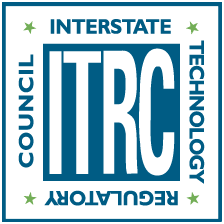| ASR | aquifer storage and recovery |
| ASTR | aquifer storage, transfer, and recovery |
| ATW | advanced treated water |
| BLM | Bureau of Land Management |
| CEC | Contaminant of Emerging Concern |
| cfs | cubic feet per second |
| FERC | Federal Energy Regulatory Commission |
| gpm | gallons per minute |
| LID | low impact development |
| MAR | managed aquifer recharge |
| MCL | Maximum Contaminant Level |
| mgd | million gallons per day |
| MIW | mining-influenced waters |
| NGO | nongovernmental organization |
| NMFS | National Marine Fisheries Service |
| NOAA | National Oceanic and Atmospheric Administration |
| OCWD | Orange County Water District |
| OM&M | operations, maintenance, and monitoring |
| PFAS | per- and polyfluoroalkyl substances |
| RI | rapid infiltration |
| TDS | total dissolved solids |
| TOC | total organic carbon |
| TSS | total suspended solids |
| tTEM | towed transient electromagnetic methods |
| UIC | underground injection control |
| USACE | United States Army Corps of Engineers |
| USBR | United States Bureau of Reclamation |
| USFWS | United States Fish and Wildlife Service |
| USDW | underground source of drinking water |
| USEPA | United States Environmental Protection Agency |
- MAR Home
- About ITRC
- Navigating this Website
- 1 Introduction
- 2 Project Planning
- 3 Managed Aquifer Recharge
- 4 Recharge Technologies
- 5 Case Studies
-
- 5 Case Studies Overview
- 5.1 HRSD Sustainable Water Initiative for Tomorrow (SWIFT) Program
- 5.2 Using a Simple, Low-Cost Injection Water Pretreatment System to Reduce the Concentration of Naturally Occurring Arsenic and Other Trace Metals in Recovered Water during ASR Operations
- 5.3 Seawater Intrusion/Replenishment in Southern Los Angeles County
- 5.4 San Antonio Water System H2Oaks Center ASR Project
- 5.5 Salinas Valley Groundwater Basin
- 5.6 Idaho’s Eastern Snake Plain Aquifer MAR Program
- 5.7 Pilot Study for the Injection of Highly Treated Reclaimed Water to Create Saltwater Intrusion Barriers and Enhance Groundwater Supplies, Hillsborough County, Florida
- 5.8 Mustang Creek Watershed Dry Well Pilot Study
- 5.9 Walla Walla Basin Watershed
- 5.10 Clark Fork River Basin MAR Modeling
- 5.11 Army Post Road ASR Well
- 5.12 South Metro Water Supply Authority Regional ASR Groundwater Model Scope of Work
- References
- Appendices
- Acknowledgments
- Document Feedback
- ITRC & Environmental Justice/Diversity Equity & Inclusion
Permission is granted to refer to or quote from this publication with the customary acknowledgment of the source (see suggested citation and disclaimer).
This web site is owned by ITRC • 1250 H Street, NW • Suite 850 • Washington, DC 20005 • (202) 266-4933 • Email: [email protected] • Terms of Service, Privacy Policy, and Usage Policy
ITRC is sponsored by the Environmental Council of the States.


